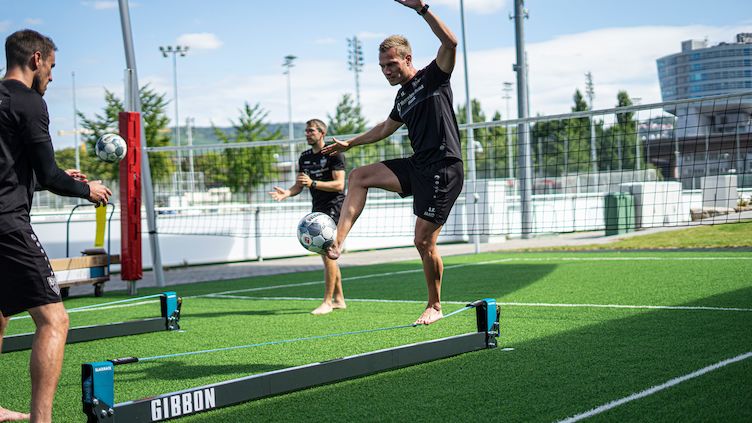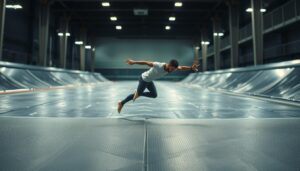Did you know that some of the top football teams in Germany are improving their performance by training on a simple yet powerful tool—slacklines? This growing trend in sports fitness isn’t just for professional athletes; it’s a game-changer for anyone looking to enhance their balance, core strength, and overall coordination.
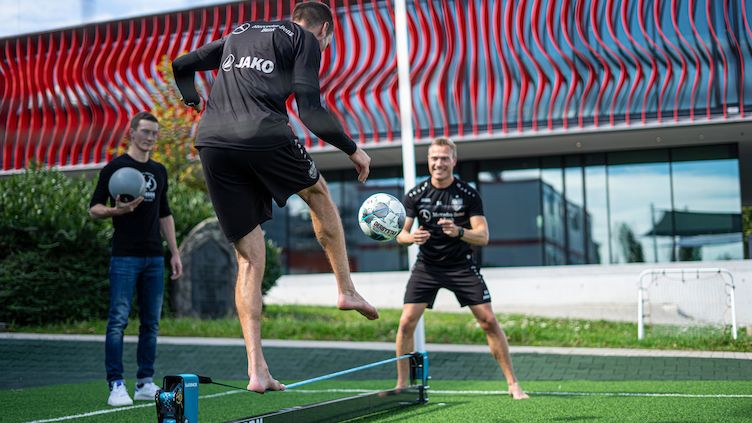
Slacklining, once a niche hobby among climbers, is now recognized as a valuable training method worldwide. In Dubai, more fitness enthusiasts are discovering how slacklining can fit into their routines, especially with dedicated areas and growing slackline communities. From boosting slackline fitness to supporting slackline rehabilitation, its versatility is unmatched. In fact, many consider it one of the best ways for beginners to build foundational strength and coordination.
With slackline Dubai meetups gaining popularity, it’s time to see what the buzz is about and how slacklining can help anyone—athlete or not—reach new heights in their fitness journey.
What is Slacklining? Understanding the Basics
If you can walk, you can slackline. That’s the beauty of this simple, accessible activity. But what exactly is slacklining, and why is it gaining popularity?
Unlike tightrope walking, which involves a stiff, high-tension cable, slacklining is done on a flat, flexible line anchored between two points. The line moves under your weight, requiring you to adjust and maintain your balance. This makes slacklining not only a physical challenge but also a mental one.

Here’s what makes slacklining unique:
- Easy Setup: All you need is a slackline kit, which typically includes a flat webbing line and a ratchet for tensioning. You can anchor it between two trees, poles, or sturdy objects.
- No Special Equipment Required: There’s no need for harnesses or safety nets for beginners. Start close to the ground and step up as your confidence grows.
- Beginner-Friendly: Many people pick up basic slacklining in just a few sessions. It’s all about practice, making it approachable for nearly everyone.
A Brief History:
Slacklining began in the 1980s when rock climbers in California’s Yosemite National Park started using climbing webbing as a fun balance challenge. What started as a campground pastime has since evolved into a global sport and fitness phenomenon.
Latest Research Shows:
A recent study published in “Journal of Sports Sciences” highlighted that slacklining improves postural stability, strengthens core muscles, and enhances motor coordination. Additionally, many trainers now include slacklining in rehabilitation programs to help patients regain balance and strength.
Why Top Football Teams in Germany Use Slacklines for Training
Balance isn’t just important; it’s everything. This is why some of Germany’s top football teams rely on slacklines to enhance performance on the field. A slackline isn’t just a tool for balance—it’s a game-changer for improving core strength, stability, and agility.
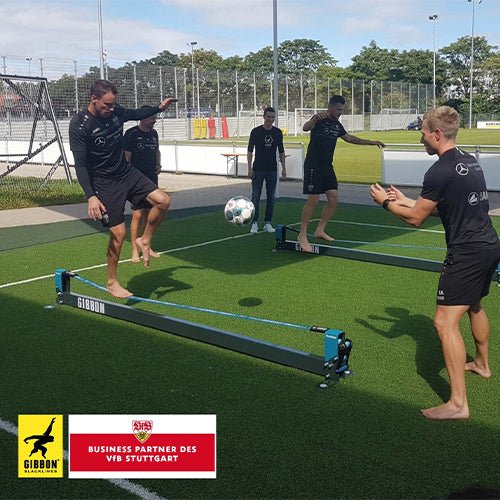
How Slacklines Help Athletes:
- Better Balance and Core Strength: Football players need impeccable balance to maintain control during intense matches. Slacklines strengthen the core, leading to improved overall stability.
- Enhanced Agility: The shifting nature of the slackline improves players’ reaction times, making them more agile and prepared for sudden directional changes on the field.
- Injury Prevention: By engaging stabilizer muscles, slacklining helps prevent common injuries, particularly in the ankles and knees, which are frequently strained in football.
Real Results from German Clubs:
Teams like VfB Stuttgart have embraced slackline training and are incorporating it into their regular routines. Trainers at the club have reported that slacklining has helped their athletes maintain balance under pressure and recover faster from minor injuries. According to a recent study in the “International Journal of Sports Science,” balance-based training programs, like slacklining, led to a 20% improvement in lower-body stability among professional athletes.
Expert Recommendations:
Dr. Alex Meyer, a physiotherapist who works with Bundesliga teams, says:
“Slacklining offers a unique way to engage core muscles and refine coordination. It’s a practical addition to any athlete’s training regimen, particularly in football, where stability can mean the difference between a clean tackle and an injury.”
Learn more about the science behind slacklining for athletes here.
The Core Benefits of Slacklining for Athletes
What if improving your balance could reduce your chance of injury by nearly half? That’s exactly what athletes are finding with slacklining. This versatile activity goes beyond being just a fun challenge; it provides measurable physical benefits that can enhance performance on the field and in everyday life.
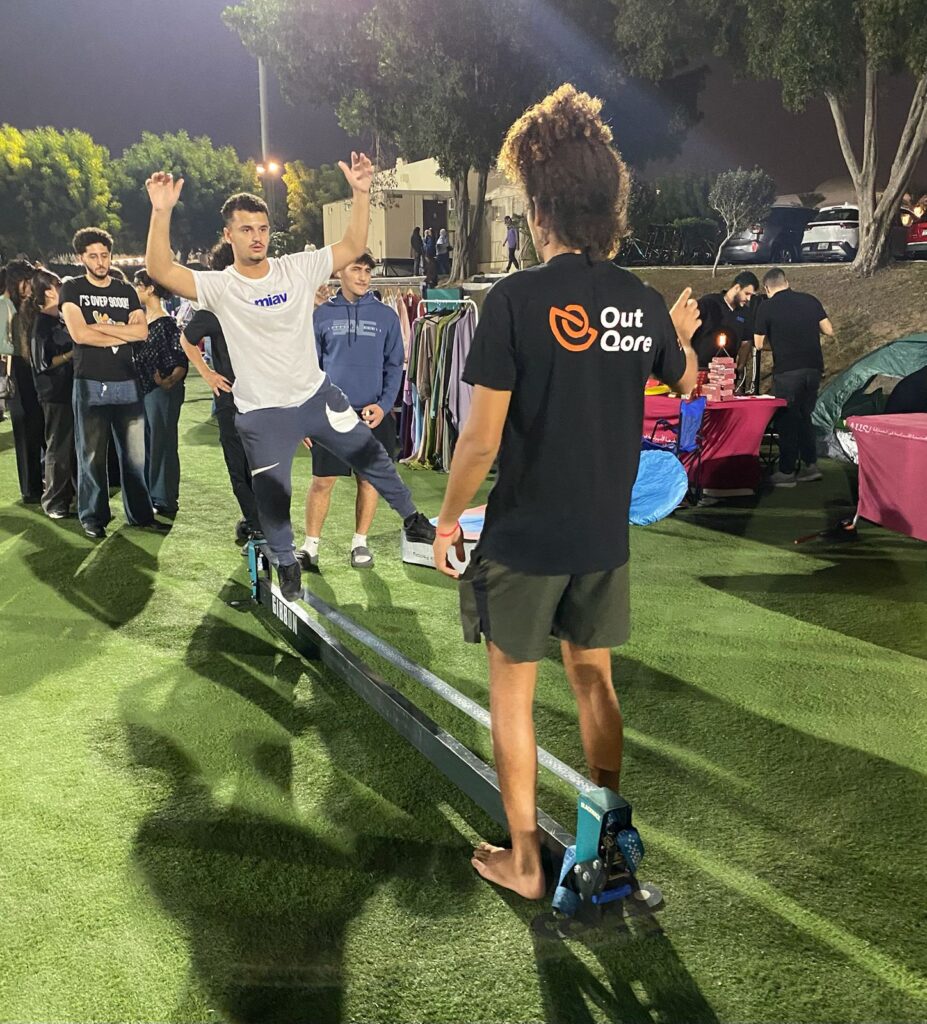
Key Benefits of Slacklining:
- Better Balance: Slacklining strengthens stabilizing muscles, improving your body’s ability to stay steady during dynamic movements.
- Stronger Core: Walking a slackline engages your abdominal and back muscles, providing a low-impact yet effective way to build core strength.
- Enhanced Coordination and Posture: Regular slackline practice helps athletes maintain proper posture and coordinate movements more smoothly, translating to better form and technique in sports.
- Injury Prevention: Research shows that improving balance and core stability significantly lowers the risk of ankle and knee injuries. In fact, a study in the Journal of Sports Sciences found that athletes who engaged in balance training saw a 30% reduction in lower-limb injuries.
Why It Matters for Football Players:
Football demands explosive movements, rapid direction changes, and full-body stability. Slacklining prepares athletes for these challenges by training their body to react quickly and efficiently. This means more controlled tackles, fewer falls, and better overall performance on the field.
Proven Results:
Dr. Mia Edwards, a sports physiologist, highlights:
“Slacklining is not just for fun; it’s a scientifically backed tool to improve balance and strength. Athletes who regularly slackline often recover faster and perform more consistently.”
Ready to see how slacklining can improve your performance? Check out this guide for more detailed insights.
Comparing Slacklining to Traditional Training Methods
Is slacklining better than using a balance board or stability ball? It’s not about “better” or “worse,” but rather about how each tool serves different purposes. To help you decide which approach suits your training goals, here’s a comparison table of three popular balance-training methods:
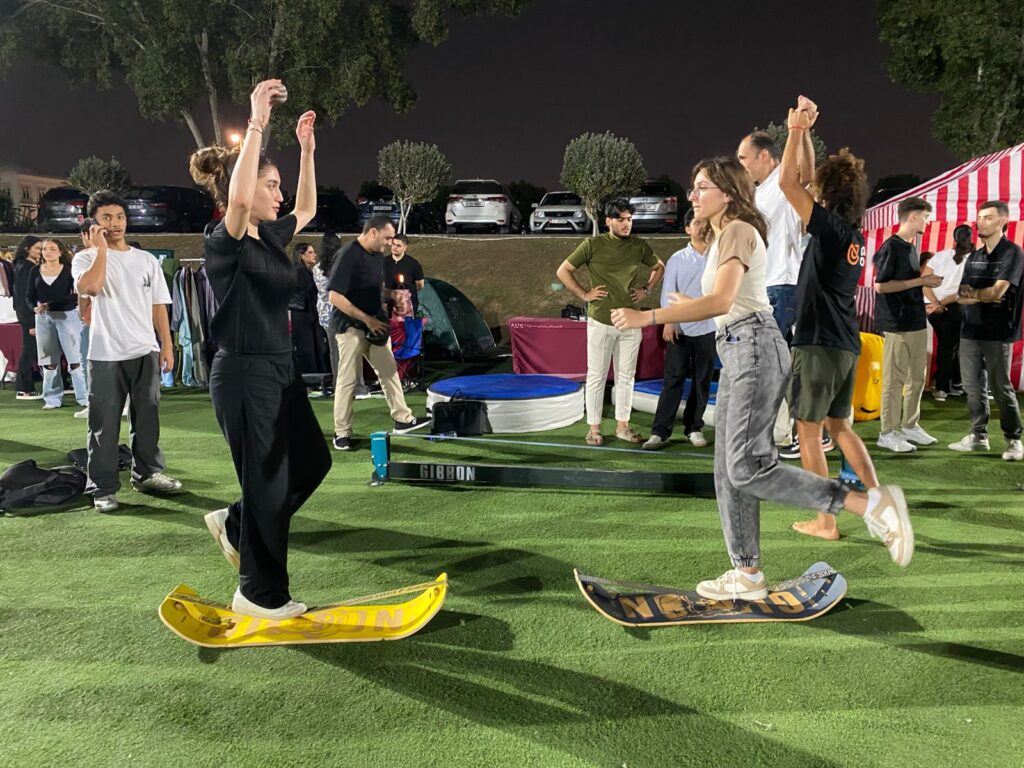
| Feature | Slacklining | Balance Board | Stability Ball |
|---|---|---|---|
| Movement | Dynamic, constantly shifting | Limited to tilting movements | Limited to controlled, subtle shifts |
| Engagement | Full-body balance and core stability | Primarily targets ankle stability | Core-focused with limited dynamic movement |
| Portability | Requires two anchor points (outdoors or indoors) | Compact and can be used anywhere | Compact and lightweight |
| Progression | Wide range of difficulty levels | Limited progression | Limited progression |
| Fun Factor | High—offers challenges and tricks | Moderate—useful but less engaging | Moderate—practical but less interactive |
Unique Advantages of Slacklining:
- Versatility: Slacklining can be done outdoors at a park, indoors with a stand, or even as part of a group activity.
- Dynamic Training: Unlike the fixed motion of boards or balls, slacklines provide a dynamic surface that forces constant adjustments, leading to quicker reflexes and improved coordination.
- Community Building: Many slackliners gather in communities or clubs, making it more than just a solo workout—it’s a social activity.
Challenges and How to Overcome Them:
- Initial Difficulty: Beginners often find slacklining tricky at first. Start low to the ground and use a wider line until you build confidence.
- Time and Patience: Like any skill, it takes time to master slacklining. Practicing regularly and setting small, achievable goals helps maintain motivation.
Achieve Stability and Confidence with Our Slackline Kit
Are you struggling to improve your balance and core strength? Our premium slackline kit is designed to help you enhance stability, boost confidence, and prevent injuries. Perfect for beginners and pros, it’s a fun and effective solution to your balance training needs.
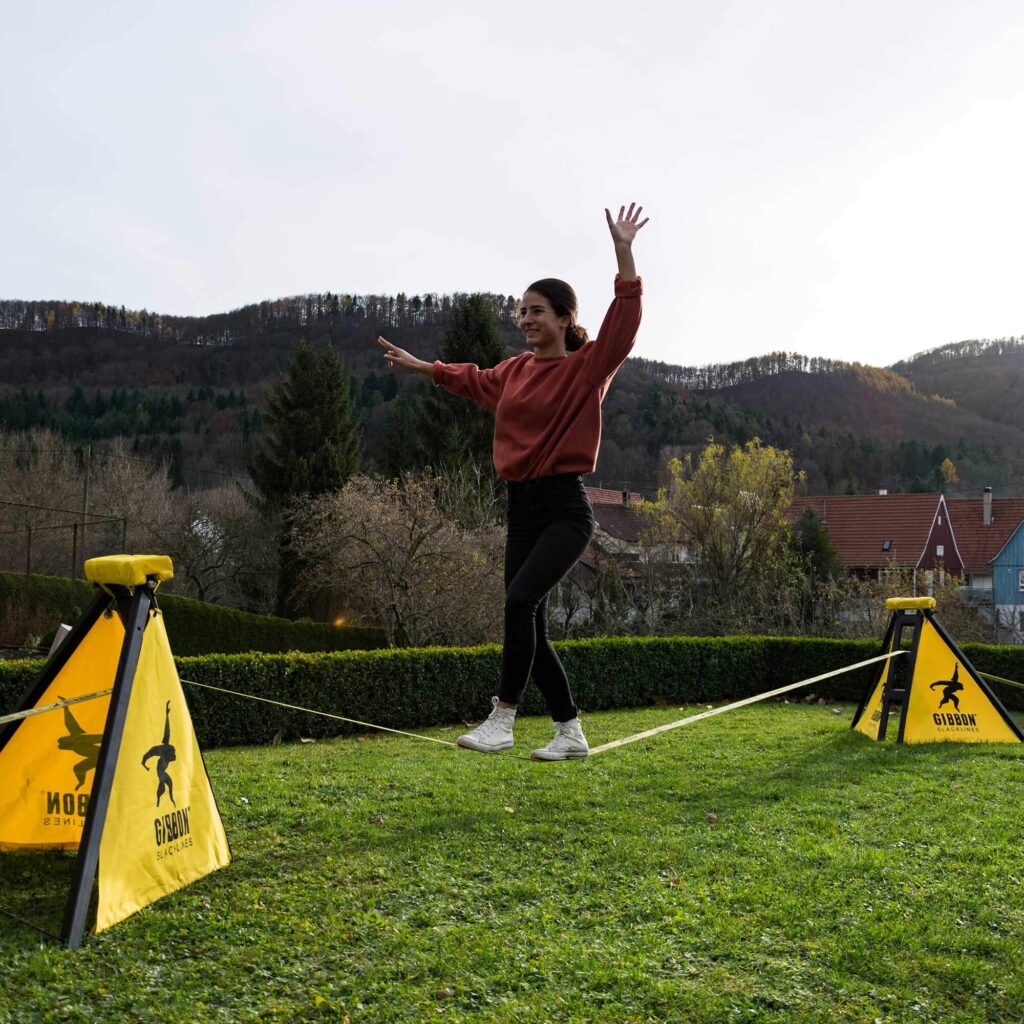
Features:
- High-quality, durable webbing for lasting performance.
- Easy-to-use ratchet system for quick setup.
- Safety tree protectors included.
- Adjustable tension for different skill levels.
- Portable design, perfect for parks, backyards, or travel.
Practical Tips for Getting Started with Slacklining
Want to try slacklining but don’t know where to start? Follow these beginner-friendly steps to set up and start walking the line safely.
Step-by-Step Guide:
- Choose the Right Slackline Kit: Start with a beginner slackline that’s wider and offers better stability. Most kits include all the necessary components: the line, a ratchet tensioner, and tree protectors.
- Find a Suitable Location: Look for two sturdy anchor points—such as trees or poles—spaced about 10–15 feet apart. Make sure the ground is soft or padded underneath for extra safety.
- Setup and Tensioning: Wrap the tree protectors around the anchor points, attach the line, and use the ratchet to apply light tension. For beginners, keep the line low to the ground (about knee-height) and not overly tight.
- Start Practicing: Begin by standing on the line with one foot and holding onto something stable. Once balanced, try taking a few steps. Keep your knees slightly bent and use your arms for stability.
- Gradual Progression: As you gain confidence, adjust the line height and tension, and experiment with basic turns or seated movements before advancing to more challenging slackline tricks.
Tips and Tricks:
- Wear lightweight, flexible shoes or try slacklining barefoot for better grip and foot alignment.
- Practice in short sessions to build muscle memory and prevent fatigue.
- Join a local slackline community or check out online tutorials for additional guidance and encouragement.
How to Get Started with Slacklining in Dubai
Curious about trying slacklining in Dubai? It’s easier than you might think to get started. Whether you’re looking to improve your balance, build core strength, or simply have fun, Dubai offers plenty of opportunities to begin your slacklining journey.
Step-by-Step to Get Started:
- Find a Slackline Community: Joining a local slackline group can help you learn the basics quickly. Outqore.com hosts a growing community of enthusiasts in Dubai who are happy to share tips and tricks.
- Choose Your Equipment: Start with a beginner slackline kit that includes all the essentials—a line, ratchet, and tree protectors. Make sure to pick a wide, low-tension line to help you balance more easily.
- Pick the Right Spot: Dubai’s parks, such as Safa Park and Kite Beach, are popular locations for slacklining. Look for sturdy anchor points like trees or dedicated slackline posts.
- Learn Basic Techniques: Before trying tricks, focus on standing and walking short distances. Keep your knees slightly bent and use your arms for balance. Short practice sessions are key to building confidence.
Outqore.com Resources:
Outqore.com not only connects you with a community but also provides articles, tutorials, and recommendations for the best slacklining gear.
Ready to start? Find a slacklining event or explore equipment reviews on Outqore.com.
Expert Opinions and Research Findings on Slacklining
- Physiotherapist Insights: Experts highlight slacklining’s role in enhancing proprioception and functional movement patterns, contributing to better athletic performance.
- Research Evidence: Studies indicate that slackline training can improve postural control and balance, essential components for athletes.
- Comparative Benefits: Athletes engaging in slacklining exhibit enhanced neuromuscular coordination compared to those relying solely on traditional exercises.
These findings underscore slacklining’s potential as a valuable tool in athletic training and rehabilitation programs.
Conclusion
Why do top football teams in Germany use slacklines in their training? The answer lies in the incredible benefits: improved balance, enhanced core strength, and reduced injury risk. These aren’t just random perks—they’re game-changing advantages that help athletes perform better on the field.
By incorporating slacklines into their routines, players can master explosive movements, sharpen their agility, and gain a stronger, more stable foundation. It’s no wonder that Germany’s top football clubs have embraced this innovative training method.
What’s Next?
Ready to see the benefits for yourself? Join a slacklining community, grab a beginner kit, and step onto the line. Whether you’re in Dubai’s parks or your backyard, slacklining can take your fitness and performance to the next level. Learn more and connect with Dubai’s slacklining community at Outqore.com.

